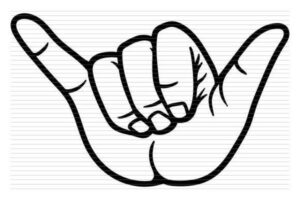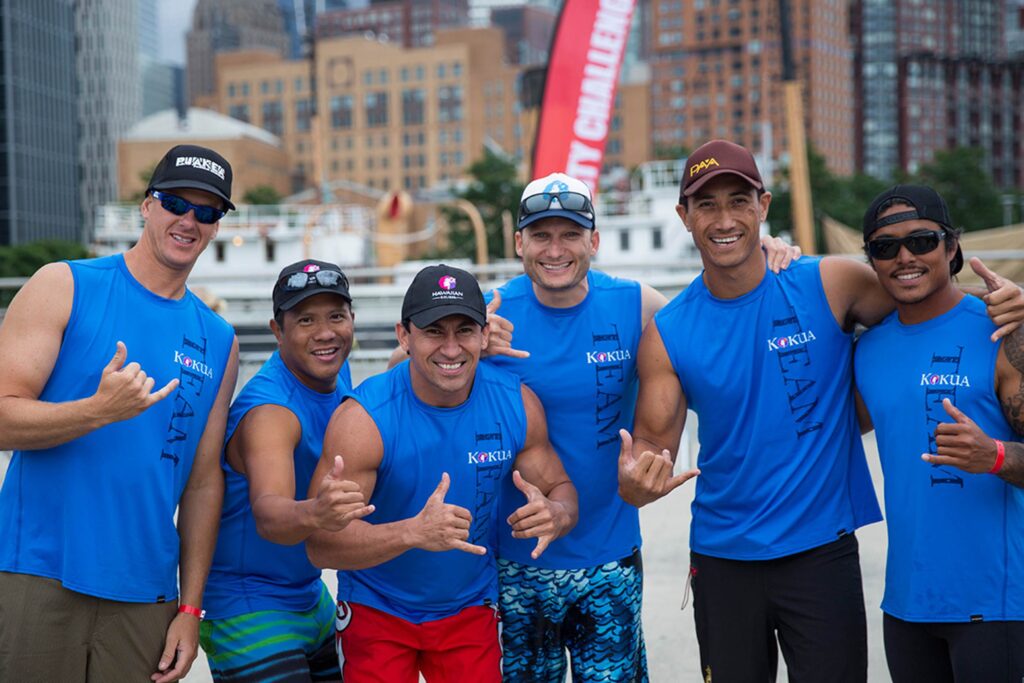Hawaii: The Origin of the Shaka Hand Sign
TRIVIA, 27 May 2024
Cheryl Chee Tsutsumi | Hawaiian Airlines - TRANSCEND Media Service
Hawaii’s Symbol of Aloha Traces Its Roots Back to the Early 1900s
“Hang loose” “Right on” “Thank you” “Things are great” “Take it easy” – in Hawaii, the Shaka sign expresses all those friendly messages and more. As kamaaina know, to make the Shaka, you curl your three middle fingers while extending your thumb and baby finger. For emphasis, quickly turn your hand back and forth with your knuckles facing outward.
As the story goes, that ubiquitous gesture traces its origins back to the early 1900s when Hamana Kalili worked at Kahuku Sugar Mill. His job as a presser was to feed cane through the rollers to squeeze out its juice. One day, Kalili’s right hand got caught in the rollers, and his middle, index and ring fingers were crushed.
After the accident, the plantation owners gave Kalili a new job as the security officer for the train that used to run between Sunset Beach and Kaaawa. Part of his job was to prevent kids from jumping on the train and taking joyrides as it slowly approached and departed Kahuku Station.
If Kalili saw kolohe (mischievous) kids trying to get on the train, he would yell and wave his hands to stop them. Of course, that looked a bit strange since he had only two fingers on his right hand. The kids adopted that gesture; it became their signal to indicate Kalili was not around or not looking, and the coast was clear for them to jump on the train.
According to a March 31, 2002 Honolulu Star-Bulletin story, Kalili was the choir director at his ward (congregation) of the Church of Jesus Christ of Latter-day Saints (Mormon) in Laie. Even though his back was to the congregation, worshipers recognized him when he raised his hands to direct the choir because of his missing fingers.
Kalili also served as “king” of the church fundraiser – complete with a hukilau, luau and show – that was held annually for years until the 1970s. Photos show him greeting attendees with his distinctive wave.
The term “Shaka” is not a Hawaiian word. It’s attributed to David “Lippy” Espinda, a used car pitchman who ended his TV commercials in the 1960s with the gesture and an enthusiastic “Shaka, broh!” In 1976, the Shaka sign was a key element of Frank Fasi’s third campaign for mayor of Honolulu. He won that race and used the Shaka icon for three more successful mayoral bids, serving six terms in all.
In Hawaii, everyone from keiki to kupuna uses the Shaka to express friendship, gratitude, goodwill, encouragement and unity. A little wave of the hand spreads a lot of aloha.
Go to Original – hawaiianairlines.com
Tags: Asia and the Pacific, Hawaii, Hawaiian Culture, Hawaiian Shaka Sign, Pacific Islands
DISCLAIMER: The statements, views and opinions expressed in pieces republished here are solely those of the authors and do not necessarily represent those of TMS. In accordance with title 17 U.S.C. section 107, this material is distributed without profit to those who have expressed a prior interest in receiving the included information for research and educational purposes. TMS has no affiliation whatsoever with the originator of this article nor is TMS endorsed or sponsored by the originator. “GO TO ORIGINAL” links are provided as a convenience to our readers and allow for verification of authenticity. However, as originating pages are often updated by their originating host sites, the versions posted may not match the versions our readers view when clicking the “GO TO ORIGINAL” links. This site contains copyrighted material the use of which has not always been specifically authorized by the copyright owner. We are making such material available in our efforts to advance understanding of environmental, political, human rights, economic, democracy, scientific, and social justice issues, etc. We believe this constitutes a ‘fair use’ of any such copyrighted material as provided for in section 107 of the US Copyright Law. In accordance with Title 17 U.S.C. Section 107, the material on this site is distributed without profit to those who have expressed a prior interest in receiving the included information for research and educational purposes. For more information go to: http://www.law.cornell.edu/uscode/17/107.shtml. If you wish to use copyrighted material from this site for purposes of your own that go beyond ‘fair use’, you must obtain permission from the copyright owner.
Join the discussion!
We welcome debate and dissent, but personal — ad hominem — attacks (on authors, other users or any individual), abuse and defamatory language will not be tolerated. Nor will we tolerate attempts to deliberately disrupt discussions. We aim to maintain an inviting space to focus on intelligent interactions and debates.

